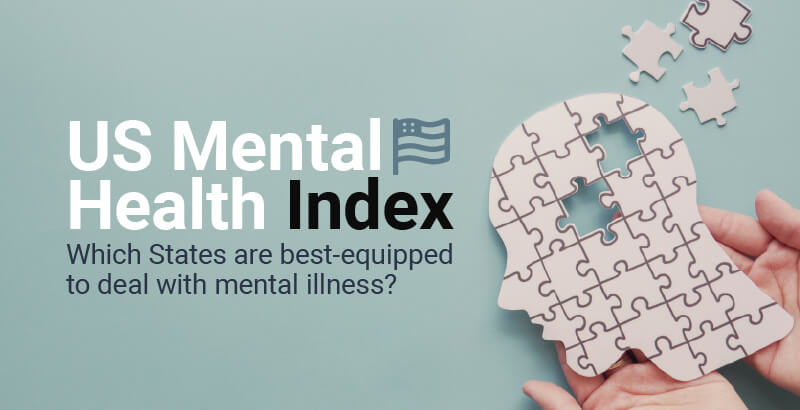US mental health index
Table of contents
Which States are best-equipped to deal with mental illness?
Mental illnesses are a collection of disorders with a range of symptoms that sadly impact the lives of millions of Americans every year. In fact, according to John Hopkins Medicine, the number of adults who suffer from a diagnosable mental condition in any given year is estimated to be as high as one in four.
Consequently, there could be over 52 million Americans currently suffering from a mental disorder, ergo it would be extremely beneficial to live in a state that is well-equipped to cater for sufferers of mental health conditions.
To discover which states are the best for dealing with mental health issues, we took into account six different factors to calculate an overall score out of ten for each of the 50 states (as well as the District of Columbia).
These factors are: the percentage of the adult population experiencing any mental illness (AMI), the percentage of the adult population with serious thoughts of suicide, the percentage of adults suffering from mental illness who did not receive treatment, the percentage of the youth population to experience at least one major depressive episode, the percentage of the depressed youths who did not receive treatment, and the number of people in the population per mental health professional.
The best states for dealing with mental illness
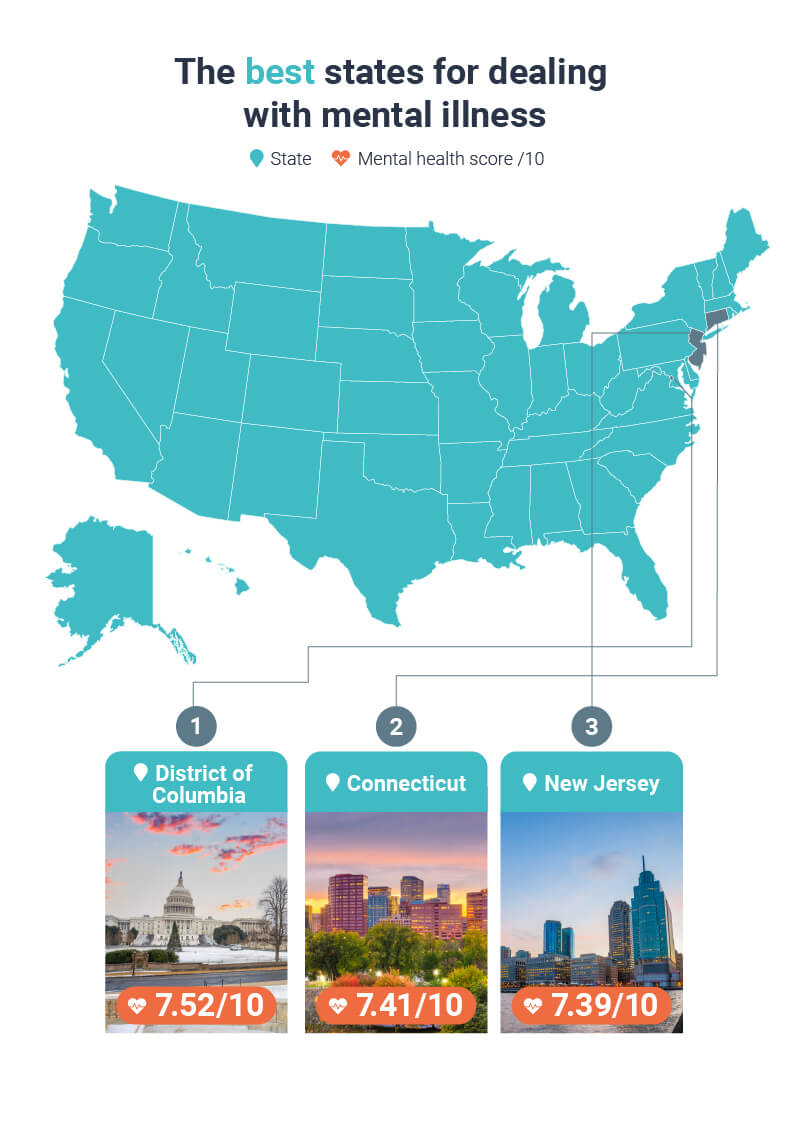
1: District of Columbia – 7.52/10
Although it is not technically a state, the US capital district is home to almost 700,000 people, and they are all in a good position when it comes to their mental health compared with other areas of the country. Overall D.C. had the highest ranking anywhere in the country and scored 7.52/10, this is helped by being the state with the lowest percentage of young people experiencing a depressive episode (10.49%), additionally it scores highly in every other category.
2: Connecticut – 7.41/10
The northeast state of Connecticut comes in second place in the rankings with an overall score of 7.41/10, although Connecticut was not the top state in any one category it was extremely consistent across the board as it scored in the top twenty for four of the six categories. Mental health awareness amongst young people seems to be prevalent as only 43.9% of youths experiencing depression did not get treated, far lower than the national average of 57.78%.
3: New Jersey – 7.39/10
The third best state for dealing with mental illness is New Jersey which achieved an overall score of 7.39/10. New Jersey has the lowest rates of mental illness in both adults and youths anywhere in the country, with only 16.14% of adults suffering from any mental illness. However, those that are mentally ill in New Jersey are not that likely to get medical attention as 60% of adults did not receive treatment (this makes them the tenth worst state in this regard), this may be due to the high number of people per mental health professional. There are 500 New Jerseyites per mental health professional, this is 27 more than the national average.
The worst states for dealing with mental illness
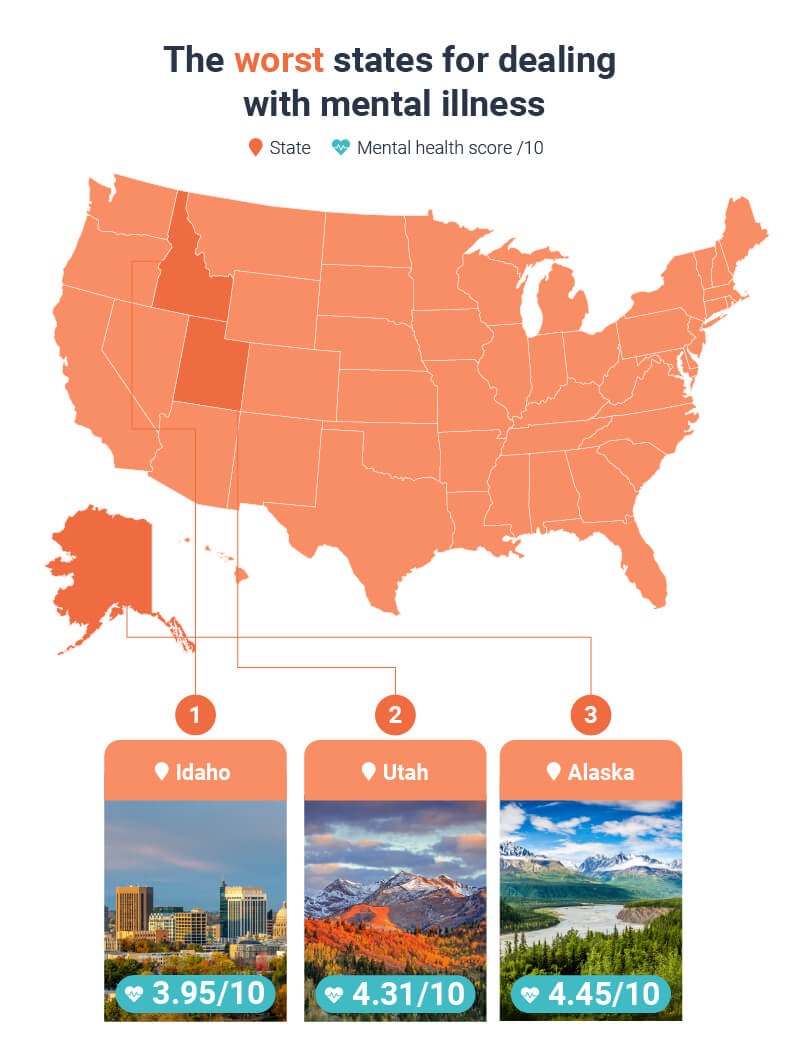
1: District of Columbia – 7.52/10
Although it is not technically a state, the US capital district is home to almost 700,000 people, and they are all in a good position when it comes to their mental health compared with other areas of the country. Overall D.C. had the highest ranking anywhere in the country and scored 7.52/10, this is helped by being the state with the lowest percentage of young people experiencing a depressive episode (10.49%), additionally it scores highly in every other category.
2: Connecticut – 7.41/10
The northeast state of Connecticut comes in second place in the rankings with an overall score of 7.41/10, although Connecticut was not the top state in any one category it was extremely consistent across the board as it scored in the top twenty for four of the six categories. Mental health awareness amongst young people seems to be prevalent as only 43.9% of youths experiencing depression did not get treated, far lower than the national average of 57.78%.
3: New Jersey – 7.39/10
The third best state for dealing with mental illness is New Jersey which achieved an overall score of 7.39/10. New Jersey has the lowest rates of mental illness in both adults and youths anywhere in the country, with only 16.14% of adults suffering from any mental illness. However, those that are mentally ill in New Jersey are not that likely to get medical attention as 60% of adults did not receive treatment (this makes them the tenth worst state in this regard), this may be due to the high number of people per mental health professional. There are 500 New Jerseyites per mental health professional, this is 27 more than the national average.
The worst states for dealing with mental illness
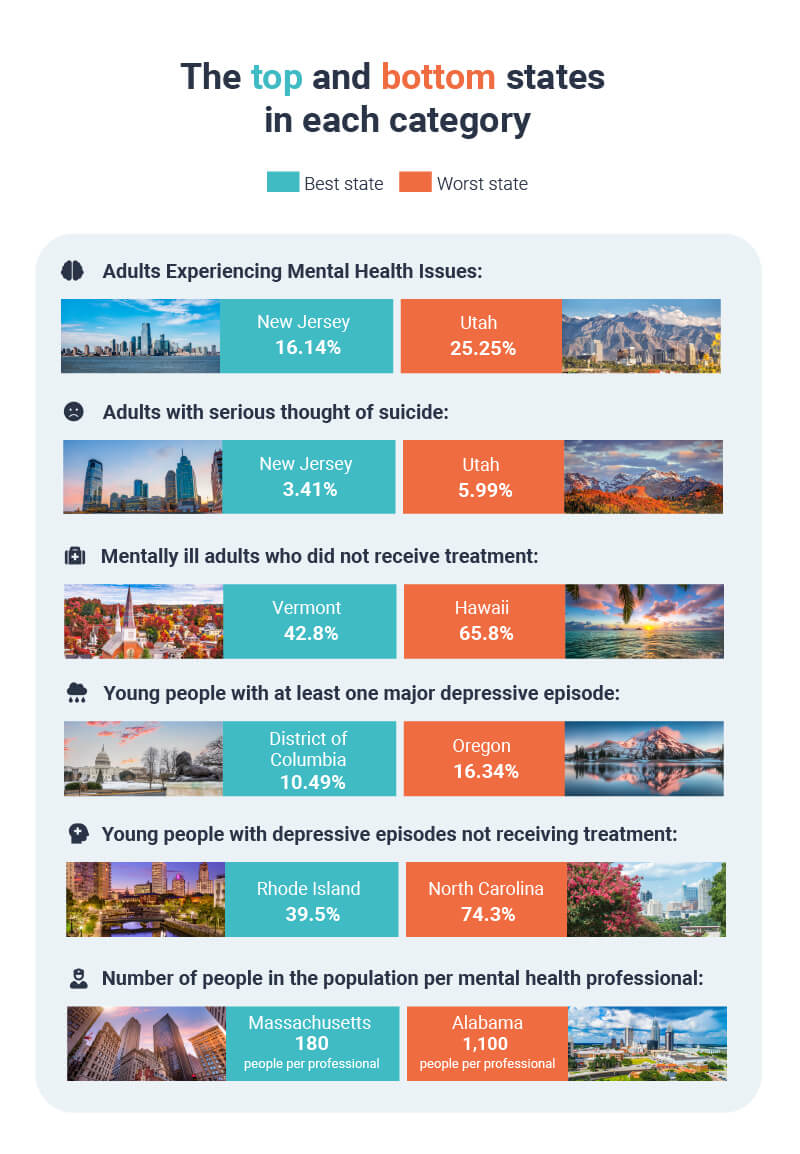
Adults Experiencing Mental Health Issues:
Best State: New Jersey – 16.14%
Worst State: Utah – 25.25%
Adults with serious thought of suicide:
Best State: New Jersey – 3.41%
Worst State: Utah – 5.99%
Mentally ill adults who did not receive treatment:
Best State: Vermont – 42.8%
Worst State: Hawaii – 65.8%
Young people with at least one major depressive episode:
Best State: District of Columbia – 10.49%
Worst State: Oregon – 16.34%
Young people with depressive episodes not receiving treatment:
Best state: Rhode Island: 39.5%
Worst State: North Carolina: 74.3%
Number of people in the population per mental health professional:
Best State: Massachusetts: 180 people per professional
Worst State: Alabama: 1,100 people per professional
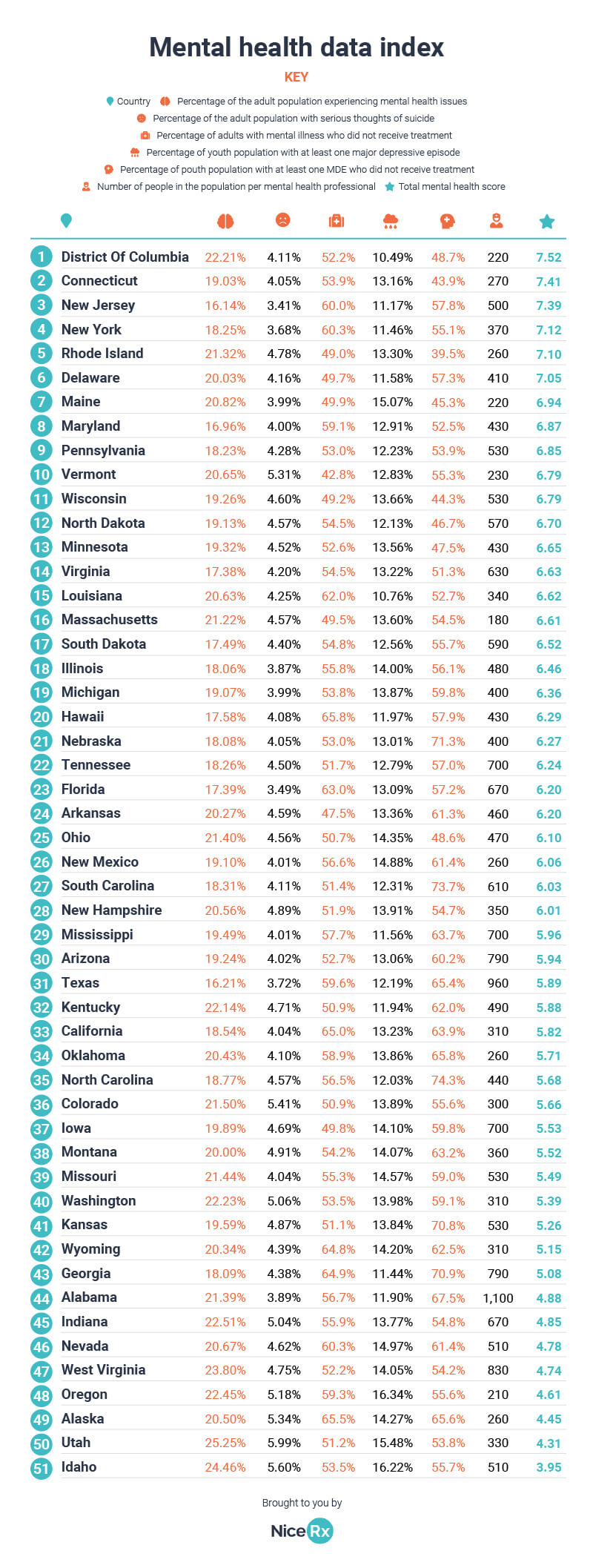
If you’re struggling to pay for your medication, we may be able to assist. NiceRx provides access to FDA-approved medications, including Vyvanse, Vraylar, Viibryd, Latuda, Trintellix and Intuniv.
Methodology
- All data was collected from: https://mhanational.org/issues/2020/mental-health-america-adult-data
- We chose six categories that we felt could give the best indication of the prevalence of mental health issues within each state, and the level of care available and utilized.
- To create an overall score for each state we used a weighted index table to rank each factor out of ten and then create an overall average score.

